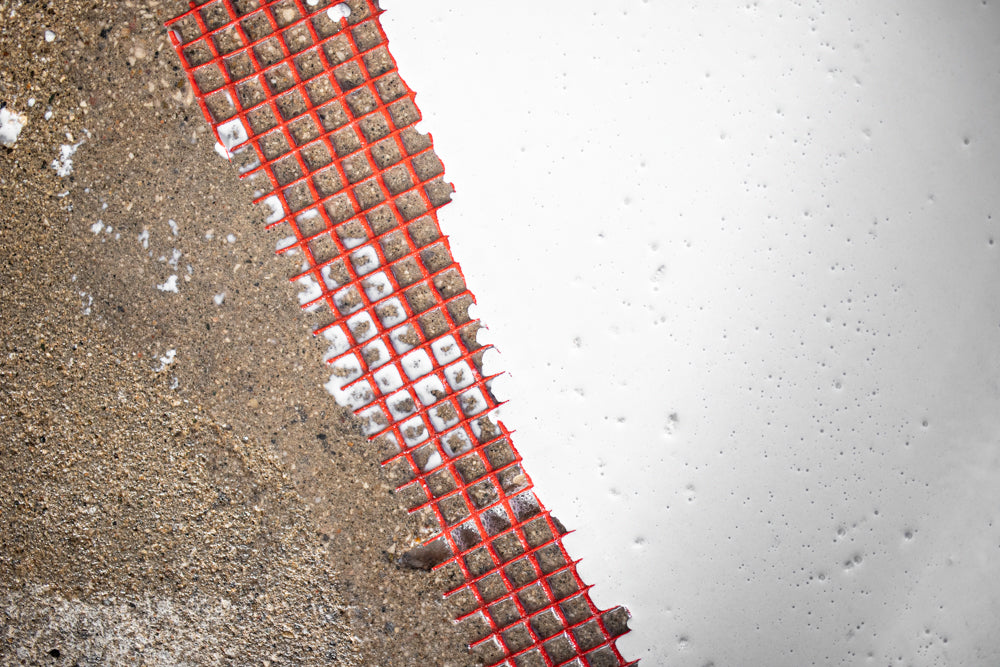The use of mesh in preparing the substrate before applying a resin coating is crucial in specific situations to ensure the durability, stability, and effectiveness of the coating. Here’s when and why to use mesh:
When to Use Mesh
Substrates with Cracks or Fissures
- Reinforcement: Mesh helps reinforce areas with cracks or fissures, preventing them from expanding and ensuring greater stability of the resin coating.
- Stress Distribution: It aids in distributing stresses across a broader surface area, reducing the risk of new cracks.
Unstable Surfaces or Those Subject to Movement
- Structural Movements: In buildings or surfaces subject to structural movements (such as thermal expansion or vibrations), the mesh provides an additional level of stability and prevents the detachment of the coating.
- Industrial Flooring: In industrial areas where floors are exposed to heavy loads and intense traffic, mesh offers additional reinforcement.
Surfaces Exposed to High Wear
Commercial Flooring: In commercial environments where durability is essential, using mesh can extend the lifespan of the resin coating.
Repairs or Renovations
- Restoration of Degraded Surfaces: When restoring degraded or damaged surfaces, mesh helps bond the new resin coating to the existing substrate, improving adhesion and durability.
- Renovation of Old Floors: For old floors showing signs of deterioration, mesh provides structural reinforcement that can prevent further damage.
Advantages of Using Mesh
- Improved Adhesion: Mesh provides an additional anchoring surface for the resin, enhancing overall adhesion.
- Structural Reinforcement: It increases the coating’s resistance to mechanical stresses and heavy loads.
- Crack Prevention: Reduces the risk of crack formation and propagation in the coating.
- Uniform Stress Distribution: Ensures that stresses are evenly distributed, preventing stress concentrations that can cause damage.
Procedure for Applying Mesh
- Surface Preparation: Thoroughly clean and prepare the surface by removing dust, dirt, and contaminants. Repair any existing cracks and fissures.
- Mesh Placement: Place the mesh on the surface before applying the primer. The mesh should be properly stretched and secured to avoid shifting during resin application.
- Primer Application: Apply an appropriate primer to improve the adhesion of both the resin and the mesh to the surface.
- Resin Application: Apply a layer of resin over the mesh, ensuring it penetrates well through the mesh and adheres to the underlying substrate.
- Leveling and Finishing: Level the resin to achieve a smooth and uniform surface. Allow it to dry and cure according to the product instructions.
Final Considerations
- Type of Mesh: Use a mesh suitable for the specific application. Fiberglass meshes are common due to their strength and durability.
- Resin Thickness: Consider the thickness of the resin coating needed to fully cover the mesh and provide the desired protection.
- Professional Consultation: In case of doubts or specific situations, consult a professional to ensure proper application and achieve the best results.
Using mesh in substrate preparation is an important practice to ensure that the resin coating performs effectively and lasts long, especially under challenging conditions or on problematic surfaces.


